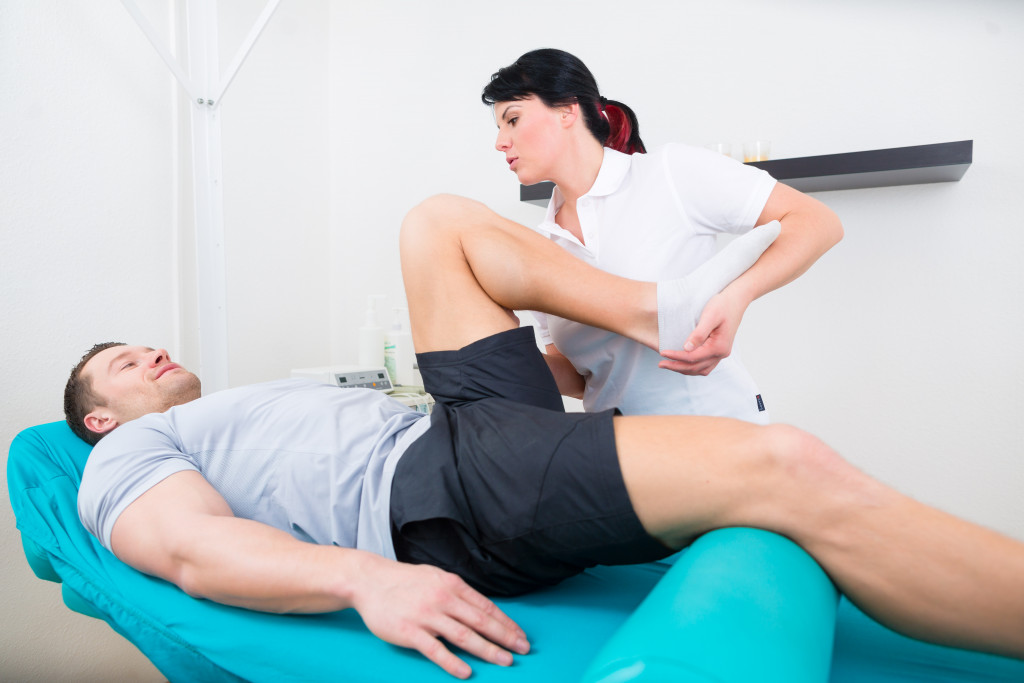Sports injuries are common and can sideline even the most active athletes. While some injuries may require surgery or lengthy rehabilitation, many can be treated with simple measures. Here are seven tips to help you deal with sports injuries and get back in the game.
Rest
As any athlete knows, injuries are a fact of life. An unexpected injury can sideline even the most careful and well-trained athletes. While pushing through the pain and trying to power through an injury can be tempting, this is often not the best course of action. In many cases, rest is the best medicine for a sports injury. By giving your body time to recover, you can reduce inflammation and promote healing.
Additionally, rest can help prevent further injury by giving your muscles and joints a chance to recover from the stress of exercise. Of course, some injuries require more than just rest. However, in many cases, taking a few days off from training can be the best way to deal with a sports injury.
Compression
Compression is a type of therapy that uses pressure to reduce swelling and promote healing. It is often used to treat sports injuries, as it can help speed up the recovery process. There are many ways to apply compression, including wraps, bandages, and ice packs. The amount of pressure applied will depend on the severity of the injury.
In most cases, compression should be applied for at least 20 minutes at a time. This therapy can be used both before and after physical activity, and it is often recommended for athletes who are recovering from an injury. Compression can help you get back to your favorite sport as quickly as possible by reducing swelling and promoting healing.
PRP Injections
Platelet-Rich-Plasma (PRP) injections are a relatively new treatment option for sports injuries. PRP, or platelet-rich plasma, is derived from the patient’s blood and contains a high concentration of growth factors. These growth factors help to promote healing and tissue regeneration.
PRP injections effectively treat a variety of sports injuries, including tendon and ligament damage, cartilage defects, and muscle strains. The injections are typically given at the injury site, and multiple injections may be necessary for more extensive or more severe injuries. PRP injections are considered a safe and effective treatment option for athletes of all levels.
Elevation
The elevation is a standard treatment for sports injuries. By elevating the injured body part, you can help to reduce pain and swelling. Height works by helping to drain fluid away from the injury site. This can help reduce pressure and inflammation, making it easier for the body to heal.
When elevation is combined with other treatments, such as ice and compression, it can be an effective way to speed up the healing process. If you have a sports injury, elevate the affected area as soon as possible. Promote the wound for at least 20 minutes every day for best results.
Pain Medication
Pain medication can be a helpful tool for managing pain from sports injuries. It is essential to work with a doctor or other healthcare provider to choose the proper medication and dose and monitor for side effects. There are a variety of pain medications available, including over-the-counter options like ibuprofen and acetaminophen, as well as prescription options like opioids.

Some pain medications may be more effective for certain types of pain than others. For example, opioids may be more effective for severe pain, while ibuprofen may be more effective for milder pain. It is also essential to consider the potential side effects of each medication before starting to take it. Pain medication can be a helpful tool for managing pain from sports injuries, but it is essential to use it safely and as directed by a healthcare provider.
Physical Therapy
As an athlete, you know that injuries are a part of the game. But when those injuries sideline you, it can be frustrating and even discouraging. The good news is that physical therapy can help you heal and get back in the game. Physical Therapy (PT) can help reduce pain, swelling, and inflammation, and it can also improve range of motion and flexibility.
By working with a PT, you can develop a customized rehabilitation plan tailored to your specific needs. And unlike surgery or other invasive procedures, PT is non-invasive and does not require any downtime. So if you’re dealing with a sports injury, be sure to talk to your doctor about PT. It may just be the key to getting you back on the field.
Surgery
Surgery is often required to fix sports-related injuries. While surgery can be a daunting prospect, it is often the best way to ensure a full and speedy recovery. In many cases, surgery is the only way to repair damaged ligaments or tendons. It can also remove bone fragments or correct skeletal alignment issues. In most cases, surgery is followed by a period of physical therapy to help the patient regain strength and flexibility. While the road to recovery can be long and challenging, successful surgery can help athletes get back to their sport and enjoy a fully active lifestyle.
If you experience a sports injury, it’s essential to seek medical attention. Once a doctor has evaluated you, you can start following these tips to help you heal and get back in the game.

